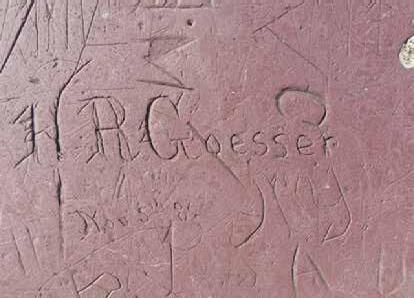
4 minute read
THINGS LEFT BEHIND
Relics provide proof of the past
By Terri Cowart Frazier and Ben Martin | The Vicksburg Post
Advertisement
Thousands arrive each year in Vicksburg to learn about its history. These visitors are eager to hear about the people who once walked along the brick streets, to visit historical homes and landmarks, and view the many relics left behind.
Vicksburg residents Charles Pendleton and Bubba Bolm spend their days surrounded by artifacts. Pendleton is the owner of the Vicksburg Civil War Museum and Bolm is the curator and director of the Old Court House Museum. Both men were asked what their favorite relics were and why, from their respective museums.
BUBBA BOLM, CURATOR AND DIRECTOR OF THE OLD COURT HOUSE MUSEUM
The building (Old Court House) itself is the most historic structure in the area. It has been witness to the events in our community since 1858 and is the most interesting “artifact” from the Siege. There are thousands of items with provenance within the wall of the Old Court House and it is difficult to pick favorites. The McCardle Library on the first floor is a researcher’s dream come true. Those who seek genealogy information, local cultural history, information about the Siege, etc. can find it here among the hundreds of family files, soldier and civilian diaries and memoirs, and thousands of rare photographs. A true insight into how the soldiers of both North and South and local families lived through the Siege.

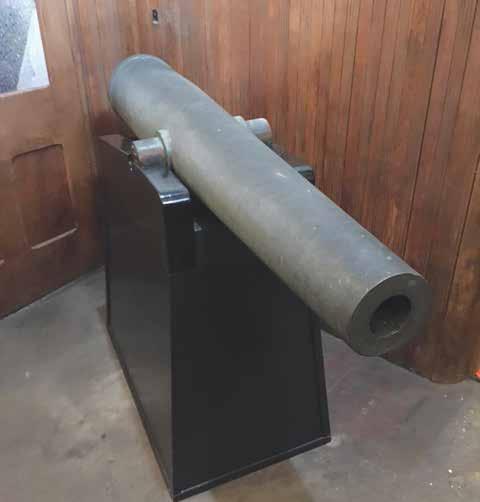

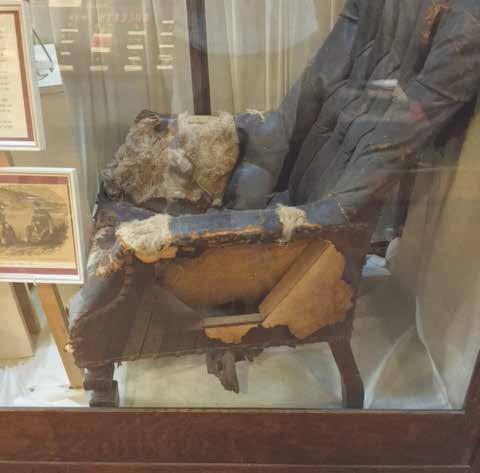
The Provost Marshall Records for the Occupation of Vicksburg are the actual handwritten records dating from July 5, 1863, thru 1865. They list the regulations and names of soldiers from both sides as well as civilians, who were brought before the provost for offenses during a very difficult time in our history.

We have two very rare cannons — A 9,200-pound Dahlgren Shell Gun manufactured at Fort Pitt Foundry in 1862. The gun served on the USS Tuscumbia and later with the 17th Corps. The gun took a crew of 17 to man it. The second is a three-inch Bronze rifled cannon made here in Vicksburg (1862) by A.B. Reading and Brother Foundry.
The chair that U.S. Grant used at his headquarters in Vicksburg.
The graffiti was carved into the glass and slate around the building.

A beautiful table handmade by a Sgt. Davis from Iowa. Davis was placed in the home of Owen Trainor following the surrender. Davis befriended the Trainor’s daughter Ann, who reminded him of his child back home. He made Ann the table with her initials in three of the corners. One of the acorns on the base was carved from the wood of the tree under which Generals Grant and Pemberton negotiated the surrender of Vicksburg.
CHARLES PENDLETON, OWNER OF THE VICKSBURG CIVIL WAR MUSEUM
Charles Pendleton produced two muster rolls from his collection of the 9th and 43rd U.S. Colored Infantry regiments.
“It lists everything about them that day, if they were injured, all that kind of stuff,” he said. “But the most important or significant thing about (these) is that they were present at Appomattox at the surrender of the army of Northern Virginia.”
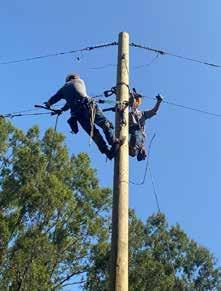
A muster roll is a regular report of a company of troops that would list identifying information and status, among other things.
“Many of the Black soldiers that (fought) died before they saw freedom. These guys were able to witness it. And I think that was really, really important,” Pendleton said.
Pendleton was also excited to show off several types of artillery shells.
One shell in particular appeared to be in rougher condition. The projectile itself was a metal sphere several inches across. A small piece of wood clung to it by thin metal straps. The shells in this display were all found in Vicksburg.


“Now keep in mind, we’re coming up this year to the 160th anniversary of the surrender of Vicksburg. So most of these artifacts are at least 160 years old,” Pendleton said. “And this one is a six-pound bormann ball, and it’s still got the wood sabot on it. And for wood to survive 160 years buried in the ground is absolutely remarkable.”
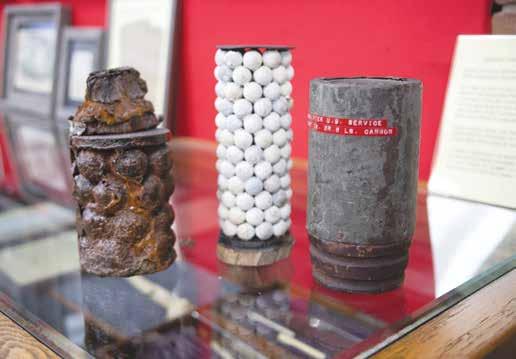
The sabot was a simple device attached to the shell that would ensure the correct orientation of the round of ammunition when placed in the barrel.
Another item Pendleton displayed was an 1860 Henry Rifle, a lever-action rifle that could deliver multiple shots in quick succession. This was a significant advantage in a time when most soldiers were equipped with muzzle-loading rifles that in well-trained hands could produce only one shot every 20 seconds.
The rifle itself was in some ways a draw for recruitment, Pendleton said.
“The 3rd U.S. Volunteers were issued these rifles. And as part of their service, not only (were they) paid, but when their service was up, they got to keep their rifle and the other equipment that they were issued,” Pendleton said. “So for a lot of guys, that was the incentive that pushed them to volunteer.”
Some officers had reservations about the new weapon, however.
“Ironically, the officers in the military didn’t like the repeating rifles because they felt like the guys would use up too much ammunition,” he added.
Today, weapons that were used by the confederacy are not nearly as common as those used by the Union. And a Confederate weapon can fetch a significantly higher price among collectors.

“When you have a really good Union weapon on the high end, you would pay $5,000. For a Confederate weapon, you could pay $30,000 to $50,000,” Pendleton said.
The Vicksburg Civil War Museum opened in 2021 and is packed full of a wide variety of artifacts from the Civil War, particularly artifacts from the Siege of Vicksburg. It is located at 1123 Washington Street in downtown Vicksburg and is open Monday through Saturday from 9 a.m. to 6 p.m. and Sunday from noon to 5 p.m.










